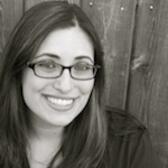10 Things You Should Know About Belle Moskowitz
-
Born in Harlem in 1877, Belle Moskowitz (née Lindner) enjoyed a successful career as a reformer, settlement worker, and labor mediator before becoming a force in Democratic politics in the 1920s. A close advisor to New York governor and presidential candidate Alfred E. Smith, by the 1928 elections she was the most powerful woman in the Democratic Party.
-
Belle’s parents, Jewish immigrants from East Prussia, owned a small jewelry store. Belle was educated in the New York City public schools and attended Teachers College at Columbia University. She specialized in teaching dramatics.
-
Belle took a position at the Educational Alliance, one of the many Jewish settlement houses in New York City that offered educational, welfare, and medical services to poor immigrants. She was initially assigned to help with traditional “women’s work” at the Alliance, but her leadership qualities were soon recognized. Promoted to director of entertainments and exhibits, she organized cultural events for Jewish immigrants and taught courses in dramatics.
-
Belle left her job at the Educational Alliance in 1903 when she married architect Charles Henry Israels. She remained active as a volunteer, even after she had children. “To think of others is as natural to the Jewish woman as to breathe,” she once wrote. She earned just enough money as a part-time editor to pay for childcare so that she could volunteer with United Hebrew Charities, the New York State Conference of Charities and Corrections, and the National Council of Jewish Women (NCJW).
-
Belle and her husband were committed to Judaism for its shared history and perspective, rather than a system of rituals. They attended New York’s storied Sephardi synagogue, Shearith Israel, but rejected the Orthodox practice of separate seating for women and men. They briefly attended the Ethical Culture Society and remained admirers and supporters even after they moved to Yonkers and found a synagogue they liked there. Later they joined Stephen Wise’s Free Synagogue.
-
After her husband died in 1911, Belle needed more paid work in order to support her three children. She began her career as a labor mediator when she was hired as a grievance clerk for the Dress and Waist Manufacturers Association. For the next four years, she negotiated agreements between employers and striking workers, rising in rank to the head of the Association’s Labor Department. Her relationship with her superiors, however, was tense, and she was fired in 1916.
-
Belle remarried in 1914. Her second husband, Henry Moskowitz, was an industrial mediator and settlement worker who had earned a Ph.D. in philosophy and was a protégé of Lillian Wald. Belle and Henry knew each other from their involvement in social reform campaigns in New York City.
-
In 1918, Belle and Henry endorsed Alfred E. Smith for governor of New York. Smith was a controversial choice for the Moskowitzes due to his links to Tammany Hall, New York’s Democratic Party political machine. Even though she was a member of the anti-Tammany “Independent Citizens’ Committee,” Belle helped to organize the newly enfranchised women voters of New York for Smith.
-
When Smith won, he took her suggestion and established a “Reconstruction Commission” to plan the course of the state’s future. Governor Smith appointed Belle the Commission’s executive secretary. She soon became one of Smith’s most trusted advisors and helped him secure the Democratic presidential nomination in 1928. During the race, which Smith ultimately lost, Belle Moskowitz was the only woman on the executive committee of the Democratic National Committee.
-
In spite of her success as a woman in an environment controlled almost entirely by men, Belle Moskowitz is not remembered as a feminist hero. When people referred to Smith as her protégé, she corrected them by calling him her mentor. She died in 1933 at the age of 55.







